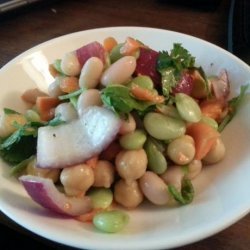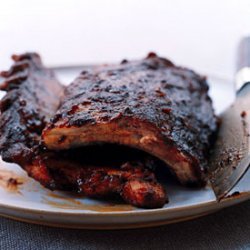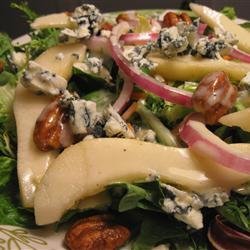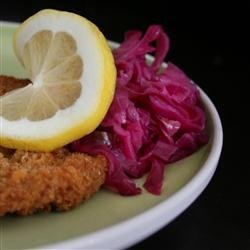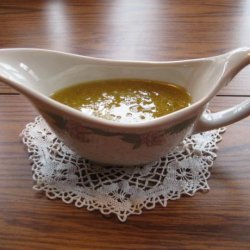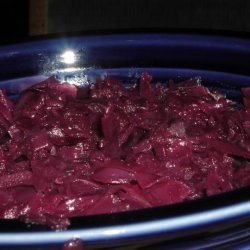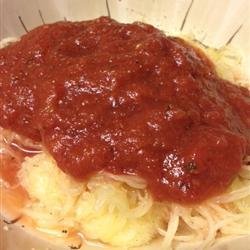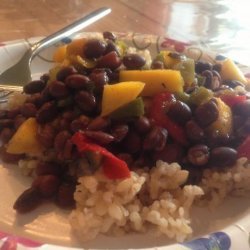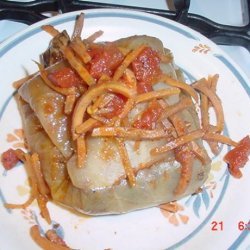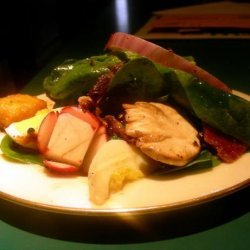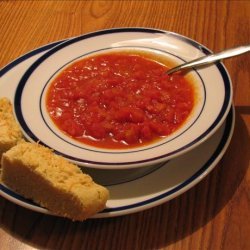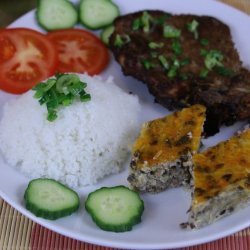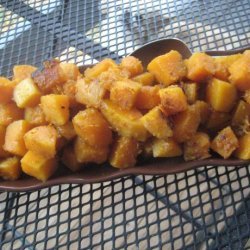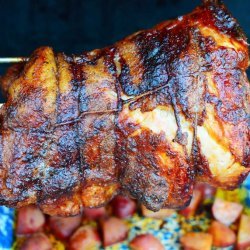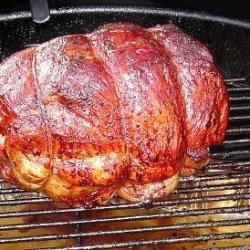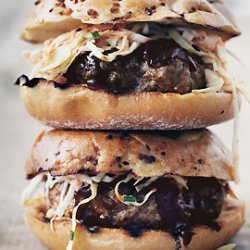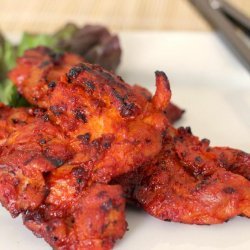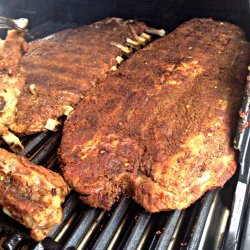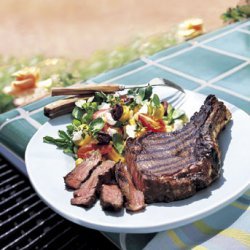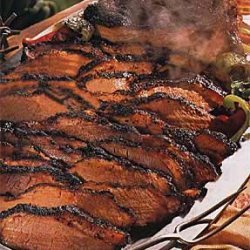Directions:
- Prepare the Pork In a small bowl, mix the salt and sugar until combined. One to three days before you plan to grill, generously sprinkle the salt-sugar rub over the entire pork shoulder, covering every surface. You may not need the full 1/4 cup of rub. (A good rule of thumb is 2 teaspoons per pound of meat). If you're lucky enough to have a shoulder with skin on it, score the skin in a crosshatch pattern, leaving an inch or so between the lines. Try to work some of the rub into the scorings. Refrigerate the pork shoulder uncovered. Bring to room temperature before you put it on the grill.
- Prepare a gas grill for smoking. Soak the wood chips in water for about 30 minutes; set aside. On a section of the grill that won't receive direct heat, place a disposable pan or tray beneath the cooking grate and directly on the flavorizer bars or lava rocks (whichever your grill has). Fill the pan about halfway with water; this will catch drippings and keep the inside of the grill moist. Set the cooking grate back on the grill. Adjust the burners so the temperature in the grill is somewhere between 200°F and 300°F. Keep the burners under the drip pan off, and those not under it on. Drain the wood chips and place them in a smoker box. A few minutes before putting the meat on the grill, set the smoker box directly over the heat source. (Smoke works best early in the cooking process). Place the shoulder on the grill above the drip pan, skin or fat side up.
- Cover the grill and roast the pork shoulder for 4 to 6 hours. The time it takes will vary depending on your piece of meat, the grill, and the cooking temperature. Lower temperature is better but takes much longer to cook. Whichever temperature you choose, check occasionally to make sure it does not exceed 300°F or fall below 200°F. When the temperature of the interior of the meat is 195°F, it should be done. Don't be alarmed if the temperature of the pork shoulder rises quickly and then stays at 150° for a long time (sometimes for several hours). This is called the stall. Be patient and wait for it to reach 195°F. Check to see if the meat feels relaxed to the touch or if you can pull it apart with a fork. If it resists, give it another 30 minutes.
- The meat should by now be a deep brown color. If the outside of the shoulder doesn't have some dark, crispy areas (i.e., bark or, if you started with the skin, crackling), crank up the temperature to 500°F for a few minutes. (Keep a close eye on it so it doesn't burn.) Remove the meat from the grill and let it rest for at least 20 to 30 minutes.
- Make the Vinegar-BBQ Sauce Combine the vinegar, water, sugar, salt, hot pepper flakes, and black pepper in a medium-size bowl and stir until the sugar and salt have dissolved; set aside.
- Either pull the pork shoulder apart with a fork or roughly chop with a cleaver, incorporating crispy bits of crackling (if you have it) or bark. Mix in a generous splash of the vinegar BBQ sauce; adjust the seasoning, making sure there's enough acid (vinegar) and salt. Put the remainder of the sauce in a pitcher on the table. Serve with soft rolls. Coleslaw and beans and rice make good accompaniments.
- Note: If you don't have a smoker box, you can make one by piercing holes all over a shallow and narrow foil-covered aluminum pan.
- Variation: With a few small changes, the same pork shoulder can be prepared in an Asian manner. This variation is loosely adapted from a David Chang recipe; the dashi recipe is adapted from Sylvan Brackett's. Cook the shoulder as above but omit the vinegar BBQ sauce. Instead, serve it with this dashi-based ginger-and-scallion dipping sauce . Make the sauce several hours before using so that the flavors have time to meld.
- Excerpted from Cooked by Michael Pollan. Reprinted by arrangement with The Penguin Press, a member of Penguin Group (USA), Inc. Copyright © Michael Pollan, 2013.
Nutrition Facts
| Amount Per 1 Serving | |||
| Calories | 4395.4 Kcal (18403 kJ) | ||
| Calories from fat | 1717.71 Kcal | ||
| % Daily Value* | |||
| Total Fat | 190.86g | 294% | |
|---|---|---|---|
| Cholesterol | 1823.47mg | 608% | |
| Sodium | 11668.33mg | 486% | |
| Potassium | 9508.47mg | 202% | |
| Total Carbs | 86.48g | 29% | |
| Sugars | 78.68g | 315% | |
| Dietary Fiber | 2.88g | 12% | |
| Protein | 545.47g | 1091% | |
| Vitamin C | 27.2mg | 45% | |
| Iron | 28.9mg | 161% | |
| Calcium | 505.5mg | 51% | |
| Amount Per 100 g | |||
| Calories | 123.68 Kcal (518 kJ) | ||
| Calories from fat | 48.33 Kcal | ||
| % Daily Value* | |||
| Total Fat | 5.37g | 294% | |
|---|---|---|---|
| Cholesterol | 51.31mg | 608% | |
| Sodium | 328.33mg | 486% | |
| Potassium | 267.56mg | 202% | |
| Total Carbs | 2.43g | 29% | |
| Sugars | 2.21g | 315% | |
| Dietary Fiber | 0.08g | 12% | |
| Protein | 15.35g | 1091% | |
| Vitamin C | 0.8mg | 45% | |
| Iron | 0.8mg | 161% | |
| Calcium | 14.2mg | 51% | |
* Percent Daily Values are based on a 2000 calorie diet. Your daily values may be higher or lower depending on your calorie needs.
Find out how many calories should you eat.
Get Your Recipe of Health!
Follow RecipeOfHealth on Facebook!


